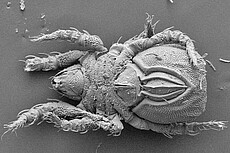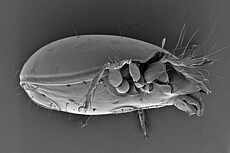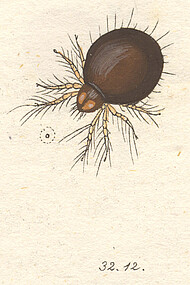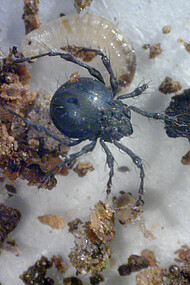Oribatida
Oribatid mites are a suborder of mites (Acari) found around the world; there are about 9.000 species described. In Germany 630 species were listed in the important work by Weigmann (2006). Most of the species live in soil, i.e. hemi- or epedaphic, where they build species-rich (>90 spp.) and abundant (>100.000 ind./m²) assemblages, especially in forests. Specific oribatid assemblages are found in microhabitats on tree trunks, in moss and lichens and under stones and rotten wood. And large numbers also occur in grassland and agriculture sites and even in semi-aquatic and limnic environments.
Oribatids are considered mesofauna, due to their body size of 0.1 to 2 mm. Most species feed on fungi or dead plant material and detritus (saprophages). A few are necro-/coprophageous) and some (opportunistic) predators.
Within the soil fauna oribatid mites occupy an important position in the detritus food web, contributing to the decomposition of plant residues and mineralization. This is especially true when soils are acidic (low pH) and earthworms decline.
Due to the work of L. Beck and S. Woas the collection of oribatid mites at SMNK houses about 15.000 vouchers of 967 taxa, among them types of 60 species. Data are in electronic databases and are currently available online through the EDAPHOBASE information system.
Curator in charge

Dr. Hubert Höfer, Dipl.-Biol.
Phone: +49 721 175-2826
E-Mail: hubert.hoefer@smnk.de










